
This fall, the Tall Goldenrod in my backyard reminds me once again why it deserves substantial recognition among native plants. Admittedly, it was planted by a bird in a less than convenient spot in my garden, but the rewards it offers pollinators make it a very valuable plant, and I most happily welcome it — even if it would look better against the fence rather than rising out of my shorter perennial butterfly garden like a giant, absurdly-placed monument. Well, I regularly talk about the importance of layers in nature — I shall simply embrace the layers nature brought to my butterfly garden. When I say Goldenrod, by the way, I mean that in a plural sense — I might have started with one, but I now have more, as is the nature of the plant.

Double-banded Bycid pair mating (Longhorn beetles, Sphaenothecus bivittata)
(with an interested 3rd party above)
The vibrantly-colored Goldenrod is currently a source of high drama in my garden. Nectar and pollen banquets have brought pollinators by the hundreds, and along with lurking predators, insect mating, and numerous larvae moving about, there is a constant flurry of activity going on in and around the bright yellow blooms and tall stems. In terms of habitat, the Goldenrod seems to be representative of an entire ecosystem — nature is hard at work, with all its wonderful interactions between different animal species and with the Goldenrod plants themselves. The role of Goldenrod is vital, providing a nutritious food source for late-season insects and other animals.

Metallic Green Sweat Bee, Augochloropsis metallica
Goldenrods’ normal habitats are fields and prairies, open woodlands, roadsides, ditches, rocky outcrops, disturbed areas, and waste areas. They often spread by rhizomes, creating colonies of clones, and this somewhat aggressive behavior is one reason some people consider Goldenrods weeds. There are species less prone to spreading, and those are perhaps better choices for smaller gardens. In my garden, my single plant has become a colony of about 12 clones, but what that means is that now I have 12 large, gorgeous bloom clusters to support wildlife. Goldenrods also can spread by seed, of course, which is how I ended up with a Goldenrod in my garden in the first place.
Goldenrods on occasion get another bad rap, unreasonably so. People suffering from hay fever sometimes wrongfully blame Goldenrods, which bloom about the same times as the wind-pollinated Ragweed, the true allergy-causing culprit. Goldenrod is mainly insect-pollinated, its pollen too heavy to be blown very far. Think of all those poor Goldenrods, mistakenly cut down when Ragweed was really to blame!
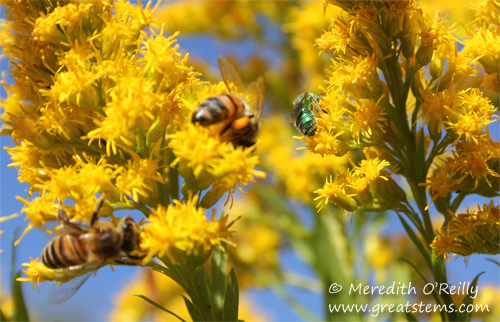 Goldenrods have high wildlife value. They are extremely important to pollinators, offering copious nectar and large, sticky pollen grains. At any point in the warmth of the day, I have hundreds of pollinators visiting the blooms. Standing up close to the flowers, I enjoy the movement of flying insects all around me, bees and wasps completely ignoring me as I turn blooms here and there for a picture or to study a particular insect. They just go about their business, eagerly moving from bloom to bloom to bloom. One cool morning, I even found three honeybees effectively frozen on the Goldenrod flowers, waiting to be warmed by the sun so they could begin to collect pollen again.
Goldenrods have high wildlife value. They are extremely important to pollinators, offering copious nectar and large, sticky pollen grains. At any point in the warmth of the day, I have hundreds of pollinators visiting the blooms. Standing up close to the flowers, I enjoy the movement of flying insects all around me, bees and wasps completely ignoring me as I turn blooms here and there for a picture or to study a particular insect. They just go about their business, eagerly moving from bloom to bloom to bloom. One cool morning, I even found three honeybees effectively frozen on the Goldenrod flowers, waiting to be warmed by the sun so they could begin to collect pollen again.
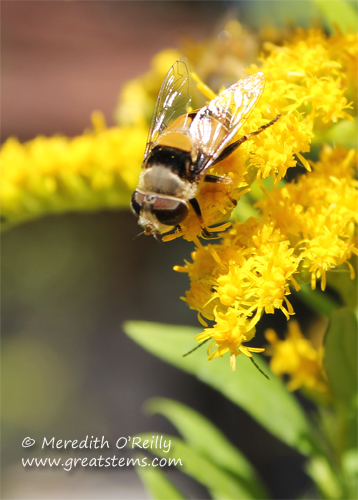
Syrphid fly
I can say confidently that the fragrant and bright Goldenrods have attracted the largest variety of insects of any plant in my wildlife garden. Multiple bee and wasp species, as well as a variety of flies, beetles, butterflies, and true bugs are attracted to the tantalizing blooms. In terms of numbers, the honeybees are the most plentiful, followed closely by numerous sweat bees, all gathering pollen and nectar. There are also many bee mimics, typically flies; their black and yellow coloration potentially help protect them from danger.
White Crab Spider
Aside from the fun I’ve been having watching all the wildlife visiting my Goldenrods, there’s no denying that the bright yellow blooms provide a tremendously attractive pop of color to my garden. They love full sun and can tolerate part shade, and they like it neither too wet nor too dry. Blooms occur from late summer to fall, depending on the species. Often Goldenrods are paired with Fall Aster for a beautiful contrast of color. If there is a concern about potential spreading, transplant regularly and remove spent flowers before they go to seed. Otherwise, let your Goldenrod plants expand naturally if you have the space to allow them to do so — the pollinators will thank you for it!
Allow me to show off some more of the creatures that have been visiting my Goldenrods. Get ready for some yellow!

Scaly Bee Fly (Lepidophora lepidocera), with a Honeybee

Close-up of the Scaly Bee Fly (Lepidophora lepidocera), with Honeybee.
Note the humped shape of the bee fly.

American Snout Butterfly

Thread-waisted solitary wasp
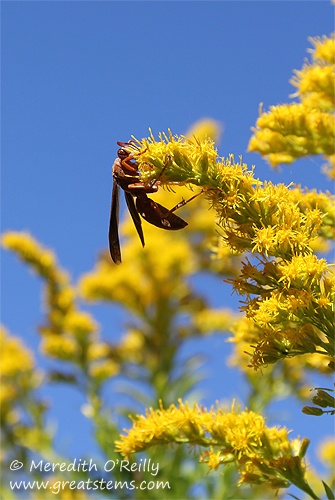
Metallic Green Sweat Bee, Augochloropsis metallica
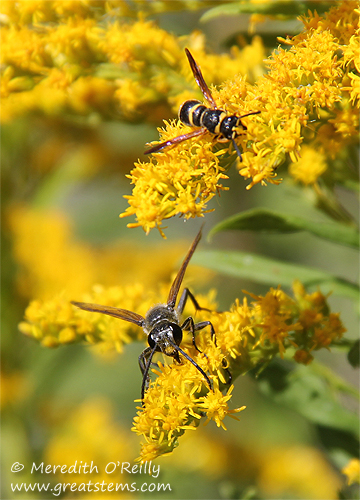


Soldier Fly, Odontomyia cincta
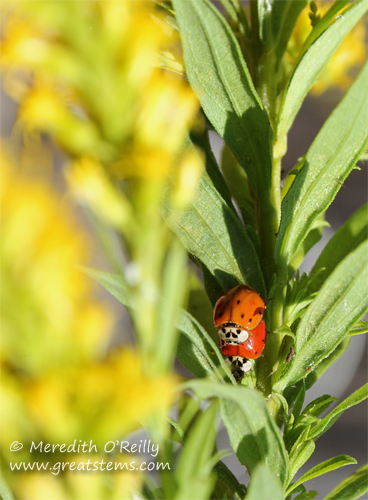 Lady beetles, mating
Lady beetles, mating
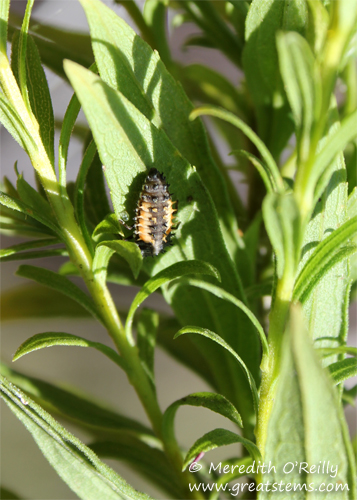
Ladybug larva

Syrphid fly
Just a sample of many!



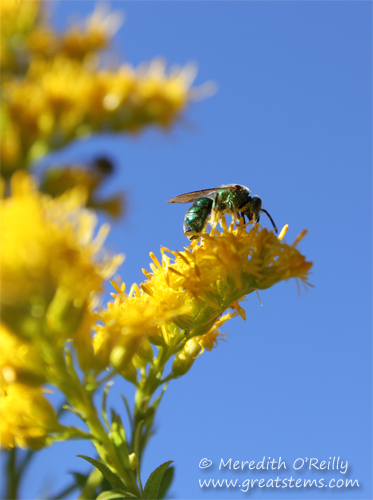

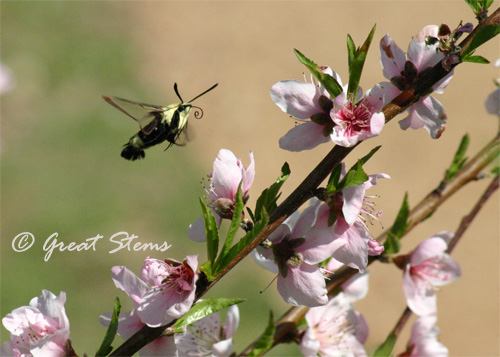
 Giant Swallowtail on Purple Coneflower
Giant Swallowtail on Purple Coneflower





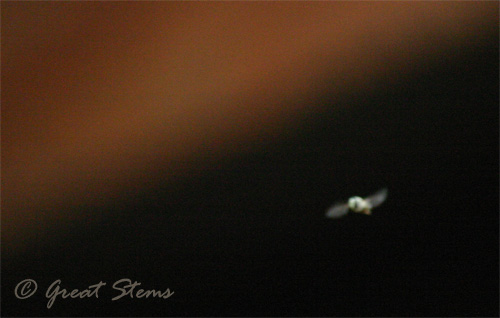

















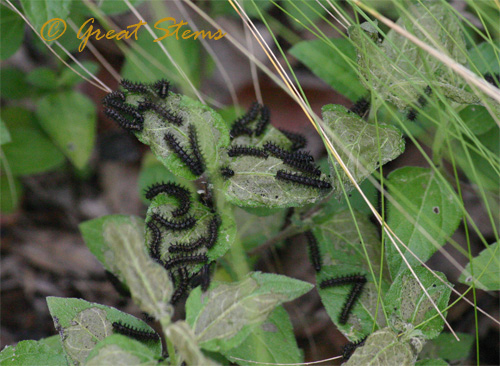


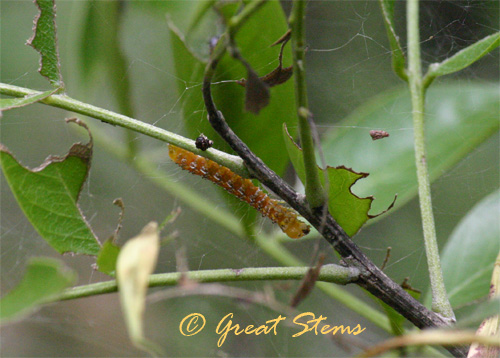

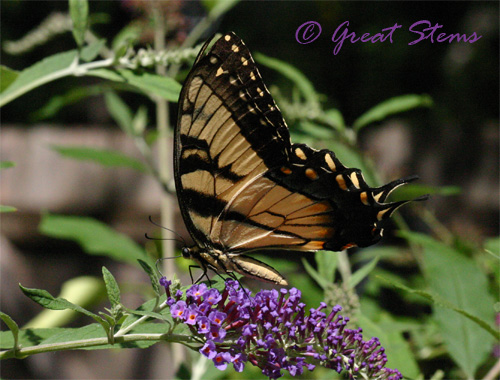
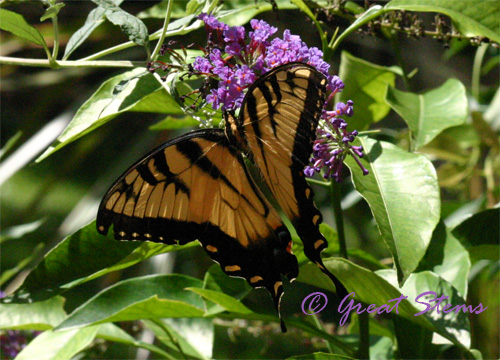
















 Hummingbirds!
Hummingbirds!
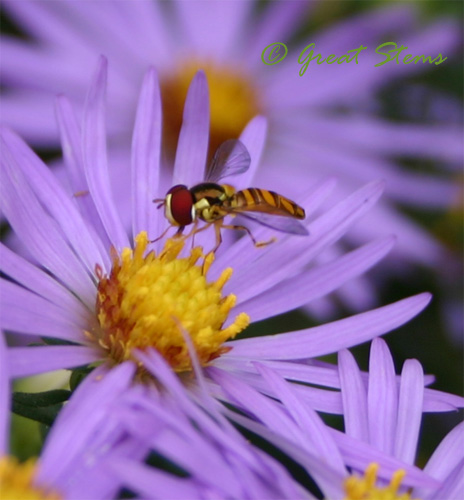





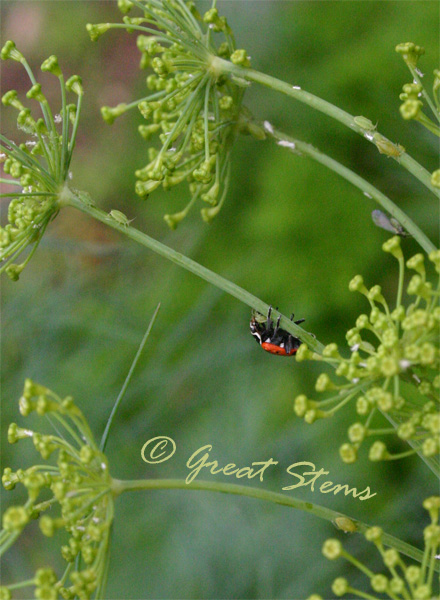







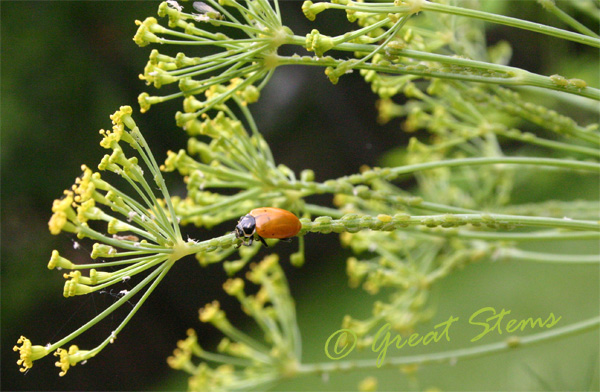
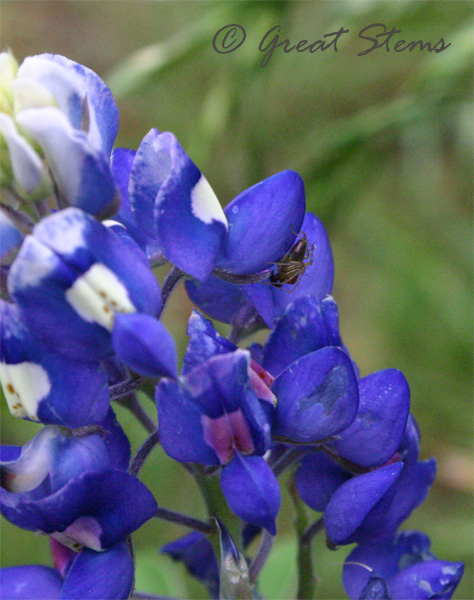
 One morning, and a fine one at that.
One morning, and a fine one at that.






















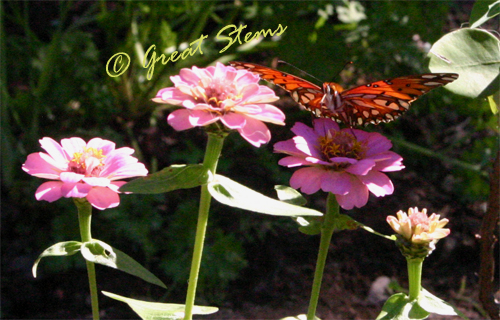



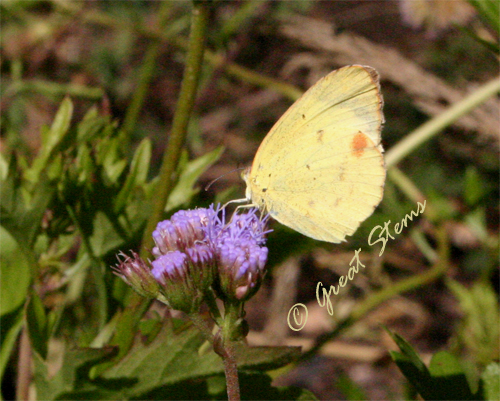





 Do you see the beautiful metallic turquoise insect in the lower left corner? That’s a Cuckoo Wasp — the only one I can identify other than “fly” or “wasp.”
Do you see the beautiful metallic turquoise insect in the lower left corner? That’s a Cuckoo Wasp — the only one I can identify other than “fly” or “wasp.”
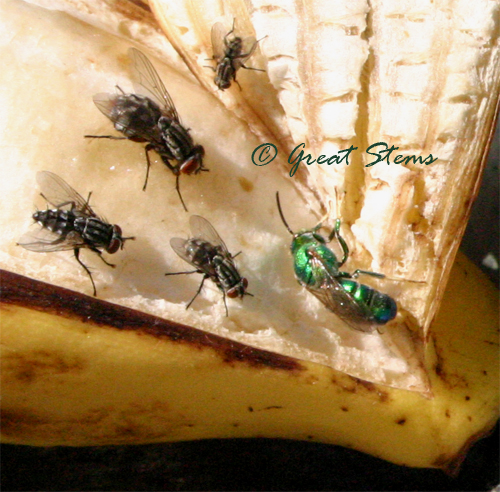

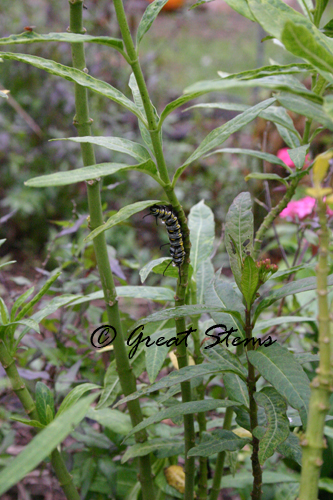 And the flies and wasps weren’t the only visitors to the bananas. Snouts began to venture over to the fresher banana, and today I found my first Red Admiral. What a beauty!
And the flies and wasps weren’t the only visitors to the bananas. Snouts began to venture over to the fresher banana, and today I found my first Red Admiral. What a beauty!

 And off in the former pumpkin patch, where a few pumpkins and vines await me doing something about them, I found an icky green guy having a feast.
And off in the former pumpkin patch, where a few pumpkins and vines await me doing something about them, I found an icky green guy having a feast. Enjoy it while you can, buddy.
Enjoy it while you can, buddy.